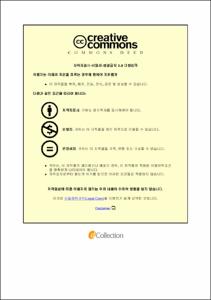Occurrence of Multiple Antibiotic Resistant Bacteria in Selected Aquaculture Farms of Korea
- Alternative Title
- 한국의 일부 양식장에서 항생제 다재내성 박테리아 존재
- Abstract
- Antibiotics have been used for the control of microbial growth in fish, humans and other animals globally. Due to the continuous application of antibiotics in aquaculture, the levels of antibiotic residues have drastically increased in the aquatic environment for years, which have increased the aquatic bacterial exposure leading to various challenges of antibiotics resistance among bacteria, antibiotic resistant gene transfer among pathogenic and non-pathogenic bacteria strains. Hence, in this study we aim to identify Multiple Antibiotic Resistance (MAR) gene in bacteria isolated from aquatic farms. We have also investigated possible transfer of genes between bacterial strains. We have collected 21 water samples from 4 aquaculture farms in Korea. Bacterial strains in each samples were isolated and tested for antibiotic resistance on Mueller Hinton Agar (MHA) media containing Tetracycline, Kanamycin, Streptomycin, Ampicillin, Vancomycin, Amikacin, Impenem, Gentamicin, Aztreonam, Meropenem, Cefepime, Cefotaxime, Ertapenem and Ceftazidime. As a result, we have isolated 10 bacterial strains with ability to grow in relatively high antibiotic concentrations. Among isolated bacteria, Halomonas alkaliphila strains showed relatively higher Minimum Inhibitory Concentrations (MICs) greater than 32 mg/ml while other isolated bacteria, Pseudomonas segitis, Pseudomonas species and Psychrobacter celer showed MICs of 0.96 mg/ml, 0.24 mg/ml and 0.48 mg/ml, respectively. In this study, we have also investigated transfer of gene aph-6-id in conjugation assay with E. coli. The results clearly indicate that Multiple Antibiotic Resistance bacteria, carrying resistant genes on mobile genetic elements are present in the different aquaculture farms. The development and reserving of antibiotic resistance and the dissemination of the resistance genes among bacteria are likely to increase in aquatic environments due to the continuous application of antibiotics in fish farms.
- Issued Date
- 2021
- Awarded Date
- 2021. 2
- Type
- Dissertation
- Publisher
- 부경대학교
- Alternative Author(s)
- Mustapher Kalyango
- Affiliation
- 부경대학교 글로벌수산대학원
- Department
- 글로벌수산대학원 국제수산과학협동과정
- Advisor
- 최태진
- Table Of Contents
- 1. INTRODUCTION 1
2. MATERIALS AND METHODS 4
2.1. Sample collection 4
2.2. Isolation of antibiotic resistant bacteria 7
2.3. PCR amplification and sequencing of Antibiotic resistant bacteria 7
2.3.1. DNA extraction 7
2.3.2. Sequencing 8
2.4. Determination of Minimum Inhibitory Concentration (MIC) 9
2.5. Antibiotic susceptibility test 9
2.6. Plasmid isolation and conjugation 10
3. RESULTS 12
3.1. Isolation of antibiotic resistant bacteria 12
3.2. Identification of Antibiotic resistant bacterial strains 18
3.3. Minimum Inhibitory Concentrations (MICs) 19
3.4. Antibiotic susceptibility test 20
3.5. Plasmid isolation and conjugation 24
4. DISCUSSION 27
5. ACKNOWLEDGEMENTS 32
6. REFERENCES 33
- Degree
- Master
- Appears in Collections:
- 글로벌수산대학원 > 국제수산과학협동과정
- Files in This Item:
-
-
Download
 Occurrence of Multiple Antibiotic Resistant Bacteria in Selected Aquaculture Farms of Korea.pdf
기타 데이터 / 628.42 kB / Adobe PDF
Occurrence of Multiple Antibiotic Resistant Bacteria in Selected Aquaculture Farms of Korea.pdf
기타 데이터 / 628.42 kB / Adobe PDF
-
Items in Repository are protected by copyright, with all rights reserved, unless otherwise indicated.